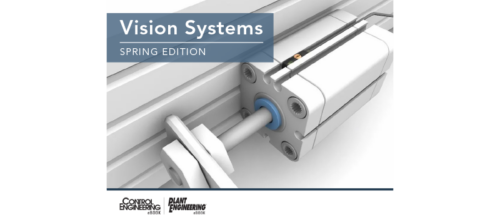Inspection sensors: Next-generation devices fit almost anywhere
Natick, MA —Checker 200 series models are the next-generation of inspection sensors from Cognex Corp . The sensors, designed to replace arrays of photoelectric sensors or low-end machine vision, are said to be as simple to set up as Checker 101 devices but offer more capability and are small enough to fit almost anywhere.
| Next generation of inspection sensors from Cognex Corp. includes Checker 201 (shown), for part finding and inspection, and Checker 202, which adds ladder logic for custom configurations. |
Series 200 sensors offer built-in lighting, variable working distance, and high-speed inspection capability at rates faster than 6,000 parts per minute. Checker reportedly can inspect multiple part features and deliver reliable, precisely timed, pass/fail results on even the fastest production lines. All have rugged IP67 housings, quick disconnect cables, and encoder-based part tracking, I/O, and high-speed USB connectivity. Line includes two models: Checker 201, which is intended for part finding and inspection; and Checker 202, which adds ladder logic for custom configurations.
Said Justin Testa, Cognex senior vice president and group business manager, “Checker 101 set the standard for inspection sensors and eliminated the hassles associated with wiring and precisely mounting multiple photoelectric sensors. The Checker 200 series is small, smart, simple, and powerful enough to solve even more challenging sensing applications, and delivers extremely reliable inspection results. They are ideal for food, beverage, and consumer product package inspection and automotive and electronics parts inspection.”
The inspection sensors differ from conventional photoelectric devices in that they can:
-
Detect parts by finding an actual feature, such as a product graphic;
-
Check features that other sensors cannot, such as a code printed on a label;
-
Inspect multiple part features simultaneously, such as candies in a blister pack; and
-
Overcome varying part positions on a line without requiring precise part handling.
—Edited by Jeanine Katzel , senior editor, Control Engineering Weekly News
( Register here and scroll down to select your choice of eNewsletters free.)
Do you have experience and expertise with the topics mentioned in this content? You should consider contributing to our CFE Media editorial team and getting the recognition you and your company deserve. Click here to start this process.


